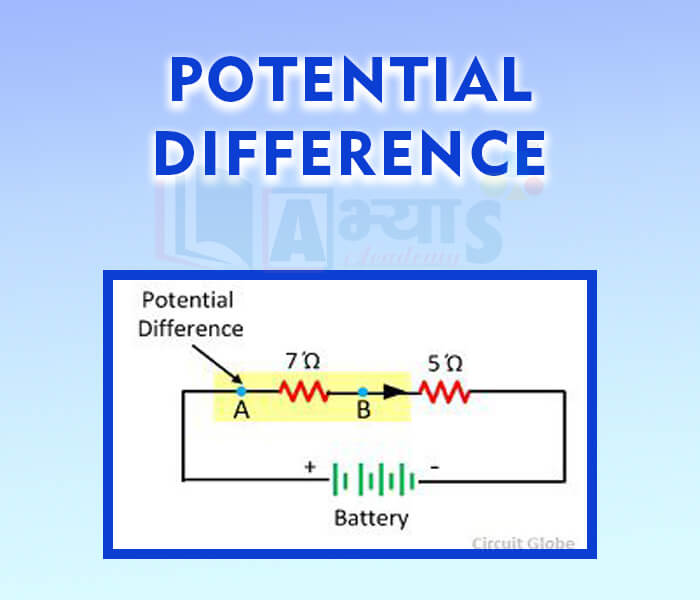Potential Difference


Potential Difference
Electric Potential:
Electric potential at a point in electric field is defined to be equal to the minimum work done by an external agent in moving a unit positive charge from infinity or a reference point to that point against the electrical force of the field. If W is the work done by external agent in bringing a positive test charge qo from infinity to a point then the potential V at that point,
According to Newtons Third Law of motion i.e. for every action there is equal and opposite reaction
The work done by an external agent in bringing a positive test charge qo from infinity to a point will be equal and opposite ti the work done by the electric field on a positive test charge qo, if
The SI unit of electric potential is joule/coulomb or volt.
Potential Difference: Potential difference between two points is equal to the minimum work done in moving a unit positive test charge from one point to the other.
,
is the work done by the electric field then
Hence the work done by external agent
And Work done by the electric field is
We know that heat energy flows from the higher temperature to the lower temperature, and this process stops when the both are at the same temperature. Same is the case with electricity, when the ends of an electrical conductor are at different potentials or we can say that when there is a potential difference - charge in the conductor flow from the higher potential to the lower potential.The flow of charge persists until both ends reach the same potential. Without a potential difference, no flow of charge will take place.
Illustration: How much work is done in moving a charge of 2 C from a point of 118 V to a point at 128 V ?
Solution: Given, charge, q = 2 C
Potential at point A
and Potential at point B
Work done, W = ? We know that,
Potential difference,
Work Done,
So, the work done in moving the charge is 20 J.
A graph is plotted between the potential difference (applied across the ends of a conductor) and the current (flowing through the conductor ). The graph is a straight line __________________. | |||
| Right Option : D | |||
| View Explanation | |||
Electric potential is _____________.
| |||
| Right Option : A | |||
| View Explanation | |||
Unit of electromotive force is ___________ . | |||
| Right Option : A | |||
| View Explanation | |||
Students / Parents Reviews [10]
Abhyas Methodology is very good. It is based on according to student and each child manages accordingly to its properly. Methodology has improved the abilities of students to shine them in future.

Manish Kumar
10thOne of the best institutes to develope a child interest in studies.Provides SST and English knowledge also unlike other institutes. Teachers are co operative and friendly online tests andPPT develope practical knowledge also.

Aman Kumar Shrivastava
10thA marvelous experience with Abhyas. I am glad to share that my ward has achieved more than enough at the Ambala ABHYAS centre. Years have passed on and more and more he has gained. May the centre flourish and develop day by day by the grace of God.

Archit Segal
7thMy experience with Abhyas academy is very good. I did not think that my every subject coming here will be so strong. The main thing is that the online tests had made me learn here more things.

Hiya Gupta
8thMy experience was very good with Abhyas academy. I am studying here from 6th class and I am satisfied by its results in my life. I improved a lot here ahead of school syllabus.

Ayan Ghosh
8thAbout Abhyas metholodology the teachers are very nice and hardworking toward students.The Centre Head Mrs Anu Sethi is also a brilliant teacher.Abhyas has taught me how to overcome problems and has always taken my doubts and suppoeted me.

Shreya Shrivastava
8thI have spent a wonderful time in Abhyas academy. It has made my reasoning more apt, English more stronger and Maths an interesting subject for me. It has given me a habbit of self studying

Yatharthi Sharma
10thAbhyas is a complete education Institute. Here extreme care is taken by teacher with the help of regular exam. Extra classes also conducted by the institute, if the student is weak.

Om Umang
10thIt was a good experience with Abhyas Academy. I even faced problems in starting but slowly and steadily overcomed. Especially reasoning classes helped me a lot.

Cheshta
10thIt was good as the experience because as we had come here we had been improved in a such envirnment created here.Extra is taught which is beneficial for future.
